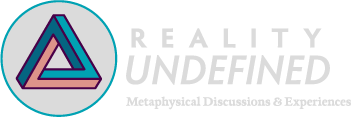 In a time of accepting responsibility for one’s own action, thoughts and words, I don’t care for someone saying, “It’s not my fault.” But what about when someone says, “It’s not your fault”?
In a time of accepting responsibility for one’s own action, thoughts and words, I don’t care for someone saying, “It’s not my fault.” But what about when someone says, “It’s not your fault”?
Readings
In teaching others who wish to learn or work on receiving messages (via medium abilities, channeling, etc.), one of the finishing tasks is to do a face-to-face reading of, or for me. These can be anywhere from a few words to…whatever.
One person I’d been working with addressed the deep sadness within me (which I’ve touched on in some past articles). And during the reading, I mentioned my frustration in going to places where there are a lot of confused earthbound beings (deceased, but still engaged in the 3D Earth energies), that I readily help those who wish to cross over if they are ready, but the influx is ongoing in those places. Not only that, but not everyone wants to cross over.
“It’s not your fault,” was the reader’s response.
“I know that,” was my reply. I knew that I hadn’t confused them, made them stay connected to Earth or trap them. I also did not force anyone to cross over – nor force them to not cross over. I knew it wasn’t my fault.
The reader leaned forward, “It’s not your fault.”
“I know.”
The reader looked me in the eye, and sat back.
We continued on, but the reader’s words echoed in the back of my mind.
Later I asked my team about what the reader said. They responded, “It’s not your fault they are still there. You cannot save the world.”
Drove the Message Home
A few days later, I was heading for town when I saw a vehicle in the distance heading towards me. It stopped, the door opened, closed, and then the vehicle turned around heading back toward town.
“You’d better now be doing an animal dump!” I proclaimed to the inside of my vehicle and sped up to catch up to them.
I dug out my phone to get a video of the vehicle and actions if needed.
As I neared, a white Jeep SUV was driving at a leisurely pace with a small dog running to catch up with the Jeep. I hit record and stayed behind the dog.
The dog’s emotions were filled with panic, fear and dread with a fierce determination to not be left behind.
The Jeep shot forward, waited for the dog to catch up, then drove slowly while the dog darted in front of the vehicle and circled back around, looking for a way back in. The Jeep darted forward again.
The dog was tiring, but the coyote pacing the dog wasn’t tired yet.
Correct. While the Jeep driver was forcing the small dog to run, I saw a coyote off in the scrub keeping pace with the dog, waiting for a chance to grab him.
When I felt the shift in the coyote (his energy shifting in preparation to dart out and grab the dog), I told coyote that the dog was under my protection.
The coyote’s focus shifted away from the dog, and the coyote stepped into the road, crossed in front of me while staring at me the whole time he crossed the road.
After the coyote cleared, I sped up to reach the Jeep (he’d slowed to a crawl again). I flagged him to stop, opened my passenger window and informed him that a coyote has been following the dog.
The man opened his door and the dog – with very relieved energy – hopped in. I was thanked and we parted.
I told my team I needed to talk to someone to find out what I needed to do about the incident. As I turned a corner, I found a police officer sitting in his vehicle on the side of the road. I pulled over and signed my request to talk to him.
He was very kind, and told me who to contact. I called when I got back home and found out that yes, what the driver had been doing was illegal. If my video caught his license plate number, they could pursue it.
My video was crap. The road was very bumpy and dusty. The Jeep was very clear, but the only thing we could tell about the license plate was the color. No number or words. The aggressive vibrations and dust obscured the information.
A few hours distance between me and the calls with the authorities, I sat with my team.
“It’s not your fault.”
“Bull hockey!” I thought to them. “If I’d gotten the plate number, then I could’ve helped the dog!”
“It’s not your fault.”
“That’s a cop out!” I was annoyed. “What if he does it again? What if the dog dies, gets hit, or gets grabbed by a coyote? I did nothing.”
A different energy stepped forward. “You are judging. What if what you did saved the dog’s life? Or made the man more aware that his actions were endangering his pet? What if you doing what you did helped the dog and man both? You don’t know. You did what you could at the time. You did what you were supposed to.”
I sat still. The previous energy stepped forward again.
“It’s not your fault. It’s not your fault that the man ran his dog that way. But you did what was asked of you. You were yourself. All you ask of your students is for them to be themselves. Yet you are harsh on yourself when you judge that what you did, being yourself, wasn’t good enough.
“You cannot save the world, and you weren’t asked to. You, and everyone else, is being asked to be themselves. Walk, live and breathe in your truth.”
Wow! They drove the message home. When they put it like that, they were completely right.
We cannot hold ourselves responsible for someone else’s actions, words, and thoughts – yet in a way, that’s exactly what I was doing. And in doing that, I was also judging them, and judging myself in relation to their experiences.
I apologized to myself and I thank the reader and my team.
by Jan Toomer
(NOTE: One thing kept popping in, it was not part of this story, but will relay it here. We are responsible to stand up to those we chose to represent us – they work for us and were chosen by us. If we don’t like the job of any of those we chose, then we need to fire them. They are supposed to be acting on yours and my behalf – perhaps as our spokesperson. Sitting idly or just whining or complaining is apathy and things will get worse until we do take responsibility for our city, state, region and country.)

Follow Us!